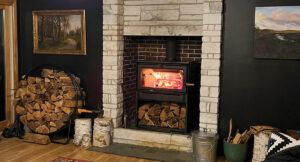Recently, I was driving to St. Louis to conduct seminars. With plenty of windshield time, I thought about the great opportunity I’ve been given to help folks across this country enjoy more comfortable homes with lower utility bills.
As I looked at hundreds of houses over the six-hour drive, a recurring thought came to my mind. How can building science and energy efficiency become important action items for all Americans? How do we generate the interest or motivation for Americans to build or make their existing homes more energy efficient? That thought never ceases to overwhelm me. What a gigantic, almost unbelievable, opportunity we have.
Notice that I said we, not I. There was a time only about 35 years ago when a handful of energy efficiency pioneers were among the industry vanguard. Over time, nationwide interest in building science and energy efficiency began to grow. The Electric Cooperatives of Arkansas were among the early pioneers following in my footsteps. Electric cooperatives across the country also took up the cause of helping their members improve the energy efficiency of their homes.
And now there are hundreds of energy efficiency professionals who have the experience and training to help you test your house and provide you with a list of needed improvements. Your local electric co-op that is sponsoring this column through this magazine, and may also sponsor my radio show, will most likely have such a person who can help you. And because you are a co-op member, your co-op wants to help you. It’s what co-ops do.
In last month’s issue, Lesson No. 1 reminded us that all energy as we know it comes from the sun. So, for Lesson No. 2, let’s discuss basic energy as it relates to heat in some form or fashion. The sun is a really big blob of heat. I expect that you already knew that, but let’s look at how that heat affects practically every aspect of our lives.
First, I think that it is neat, and not by coincidence, that our earth seems to be the only planet that is just about the right distance from the sun to support life as we know it. If we were much closer to the source of all energy, it might be too hot. And if we were farther away, it might be too cold.
The sun always shines and affects the earth every second of every day. It is estimated that about half of the heat from the sun is absorbed by something on earth. It is not possible for us to list all of the things that absorb and benefit from the sun’s heat, but it is possible to explain how that heat affects our daily lives.
Heat travels three ways — by conduction, convection and radiation. The better we understand these principles, the better we can understand how a house uses energy. I am going to do my very best to explain these to you with examples that are easy to understand, but remember that the only reason I am known as the doctor of energy efficiency is because my initials are D.R.
According to the Webster dictionary, conduction is the passing of heat from particle to particle. That means conduction will occur anytime that one substance of a certain temperature touches another substance of a different temperature. Your foot touching a cold floor or stepping into a hot tub of water is conduction. Your hand touching a cold windowpane or a hot pan in the oven is conduction. Generally speaking, conduction does not occur in gases such as air. That would be convection and will be covered in the next issue.
The speed of the conduction can be very fast or very slow. If the water in the shower is 105 degrees, you say, Aaahhh that feels great. But if the first blast is 140 degrees, like some motels, you may scream instead. Remember that a good conductor of heat is not a good insulator and vice versa.
Insulation slows the rate of conduction. A rug or a piece of carpet on that cold floor will make that bare foot feel a lot warmer. Heat always moves toward cold, and, in this case, the heat simply does not leave your foot as fast as before. Furthermore, not all conduction is a bad thing. Take for instance an electric water heater. The electric element touches the colder water within the storage tank and heats it by conduction. That is a useful form of conduction. Other useful examples are a coffee maker, a frying pan cooking an egg and a waffle iron. Bet you didn’t know building science could whet your appetite!
Next month, I’ll describe how conductive heat often changes to convective heat. The springtime warmth provides us many examples. Stay tuned for the next lesson.
Doug Rye can be heard on several different Illinois radio stations. You can go to Doug Rye’s Web site at www.dougrye.com, e-mail him at info@philliprye.com, or call 501-653-7931.







